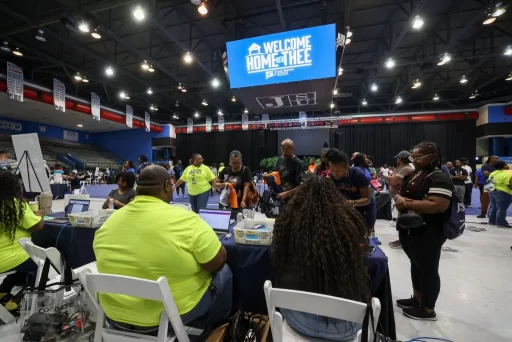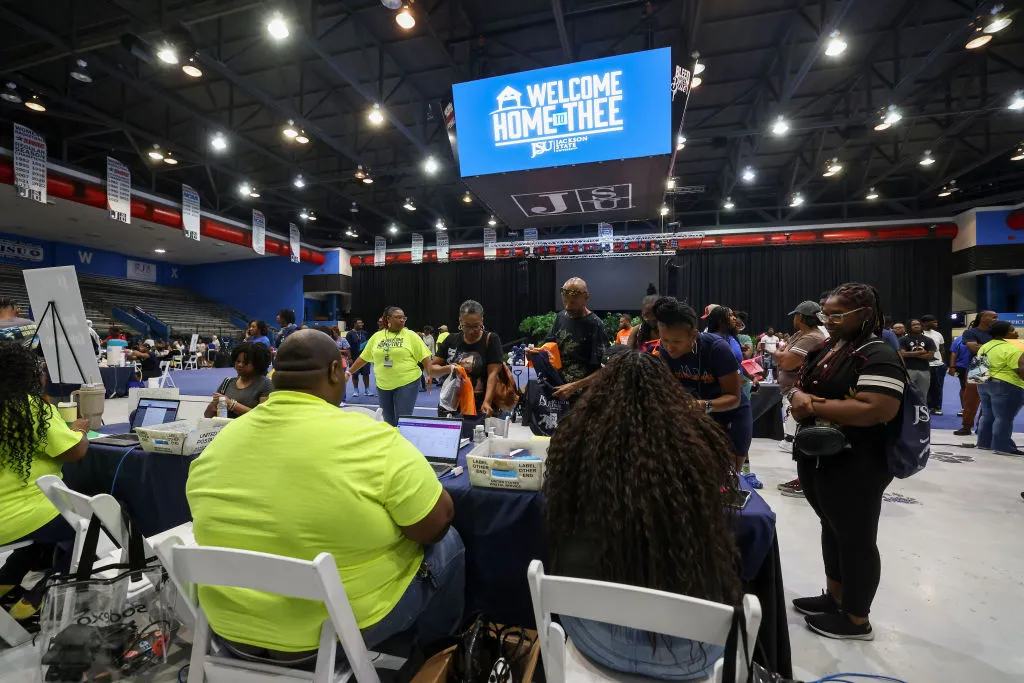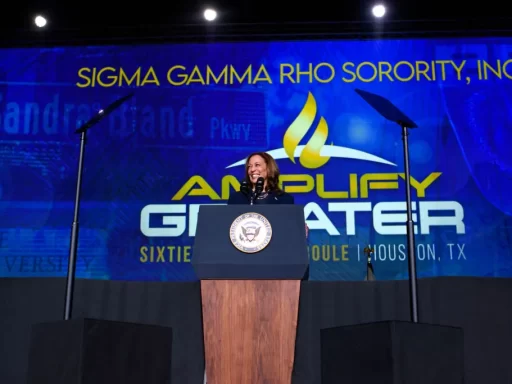Jackson State University’s one-stop-shop welcomes families, friends, and incoming freshmen and transfer students for registration during the official “Welcome Home to THEE” Move-In Day on Aug. 10, 2024. | Source: Jackson State University / Getty
It’s back-to-school season, with an asterisk.
Enrollment rates at historically Black colleges and universities (HBCUs) have been surging while the opposite has proven to be true for Black students at the nation’s most competitive institutions of higher learning, according to reports. The fact that both of these truths are occurring in the aftermath of last year’s decision by the U.S. Supreme Court to bar race-based college admissions is, of course, no coincidence.
HBCU enrollment and the end of race-based admissions
Several of the top-ranked universities in the U.S., for instance, have seen a sharp dip in the enrollment of Black students for this current semester. That includes Amherst College, Tufts University, the University of Virginia and the Massachusetts Institute of Technology (MIT), all of which are consistently ranked among the nation’s best colleges.
MIT experienced the most dramatic dip in Black students. At the same time, though, its shares of white and Asian students “jumped,” as the New York Times described it.
MORE: HBCU Leaders Suggest Affirmative Action Ending Can Affect HBCU Enrollment
Conversely, while enrollment at HBCUs had already been on the rise for years now, particularly recently, a growing number of Black colleges have also been reporting a record number of students applying, being accepted and enrolling.
Hampton University is one HBCU that specifically referenced the end of affirmative action in college admissions for its booming enrollment.
“I think that many students recognize that this ruling impacted them personally,” Angela Nixon Boyd, Hampton University assistant vice president of enrollment and dean of admission, told WAVY 10 News. “And so they, again, want to be in an environment where they feel welcomed, feel safe and that they feel that they will have an opportunity for success.”
Boyd said the small, private liberal arts school in southeastern Virginia noticed a “shift” in applications after the Supreme Court decision.
“During that time there was a little bit of an explosion and a welcomed one,” Boyd added.

Southern University and A&M College administration and Staff serving students food at Mayberry Cafeteria on August 26, 2024, in Baton Rouge, Louisiana. | Source: Southern University and A&M College / Getty
Hampton was far from alone in the increased interest in HBCUs, which as a whole has experienced a 4% rise in overall enrollment since the Supreme Court decision, according to data from the National Student Clearinghouse Research Center. Other HBCUs enjoying record enrollment include but are not limited to Bethune-Cookman University, North Carolina A&T State University, Edward Waters University, Florida A&M University, Wilberforce University and Howard University.
Fayetteville State University (FSU) in North Carolina on Tuesday announced its current enrollment is nearly 20% higher than it was in 2018 and has reached a record high in enrollment for the third straight year, with more than 7,000 students.
FSU Chancellor Darrell Allison didn’t specifically credit the Supreme Court decision for the upward trend as an example of how HBCU enrollment had already been rising well before the elimination of race-based admissions.
The collision of both of those circumstances has seemingly helped make HBCUs more popular for Black students in college.
The Supreme Court decision may have also sent a message to Black students at the aforementioned elite colleges and other predominately white institutes (PWIs) that they’d be more than a diversity statistic at an HBCU.
“Black students want to be in environments that are affirming, where they feel like they have community, people who understand them … build them up and lead them to be successful in the careers,” Jhenai Chandler, former senior director at the Institute for College Access and Success, recently told WGBH.
Beyond the SCOTUS decision
Years before the Supreme Court decision, enrollment at HBCUs was increasing while overall college enrollment dipped, data shows.
According to Higher Ed Dive, HBCU leaders have attributed the surge in part to “new retention and recruitment efforts and academic support for incoming students” along with greater philanthropic efforts and government funding, including the more than $16 billion that’s been doled out by the Biden-Harris administration.
Politics and social justice, including but not limited to the police murder of George Floyd, have also helped increase interest in HBCUs as more Black students seek places to learn where they will look like their classmates.
HBCU enrollment surge isn’t all good news
While enrollment at historically Black colleges is up, the number of Black males enrolled at HBCUs has fallen at the same time. And that’s putting it mildly.
Black male enrollment at HBCUs is at a nearly 50-year low, according to research published last month by the American Institute for Boys and Men (AIBM).
Perhaps even more alarming is that “The share of non-Black students at HBCUs is now about equal to the share of Black male students, at 26% and 25% respectively,” AIBM found.
The decline in Black male enrollment at HBCUs is likely because of “inadequate K-12 preparation, a lack of Black male teachers, and financial barriers both individually and institutionally,” AIBM concluded.

JACKSON, MS – AUGUST 10: Jackson State University’s one-stop-shop welcomes families, friends, and incoming freshmen and transfer students for registration during the official “Welcome Home to THEE” Move-In Day on Saturday, Aug. 10, 2024. | Source: Jackson State University / Getty
Can the HBCU enrollment explosion be sustained?
Chances are that the trend of HBCUs fielding more applications and enrolling more students won’t slow anytime soon, particularly because it was already happening before the Supreme Court decision. The elimination of race-based college admissions will likely continue to force Black students to increasingly consider HBCUs as more elite colleges and other PWIs continue to accept fewer students of color.
It is precisely for those reasons that HBCUs must for fortified and strengthened, according to Phyllis Hill, the founder of the Black Southern Women’s Collaborative and the national organizing director for Faith in Action.
The Supreme Court decision “stubbornly rests at the intersection of race and class, leading to broader questions about the true availability of opportunity for all,” Hill wrote in an op-ed for NewsOne following the ruling last year.
SEE ALSO:
VP Kamala Harris Appeals To Young Black Voters In Open Letter To HBCU Students: ‘I Need Your Support’
Florida A&M University Seeking New Senior Leadership Amid ‘C






